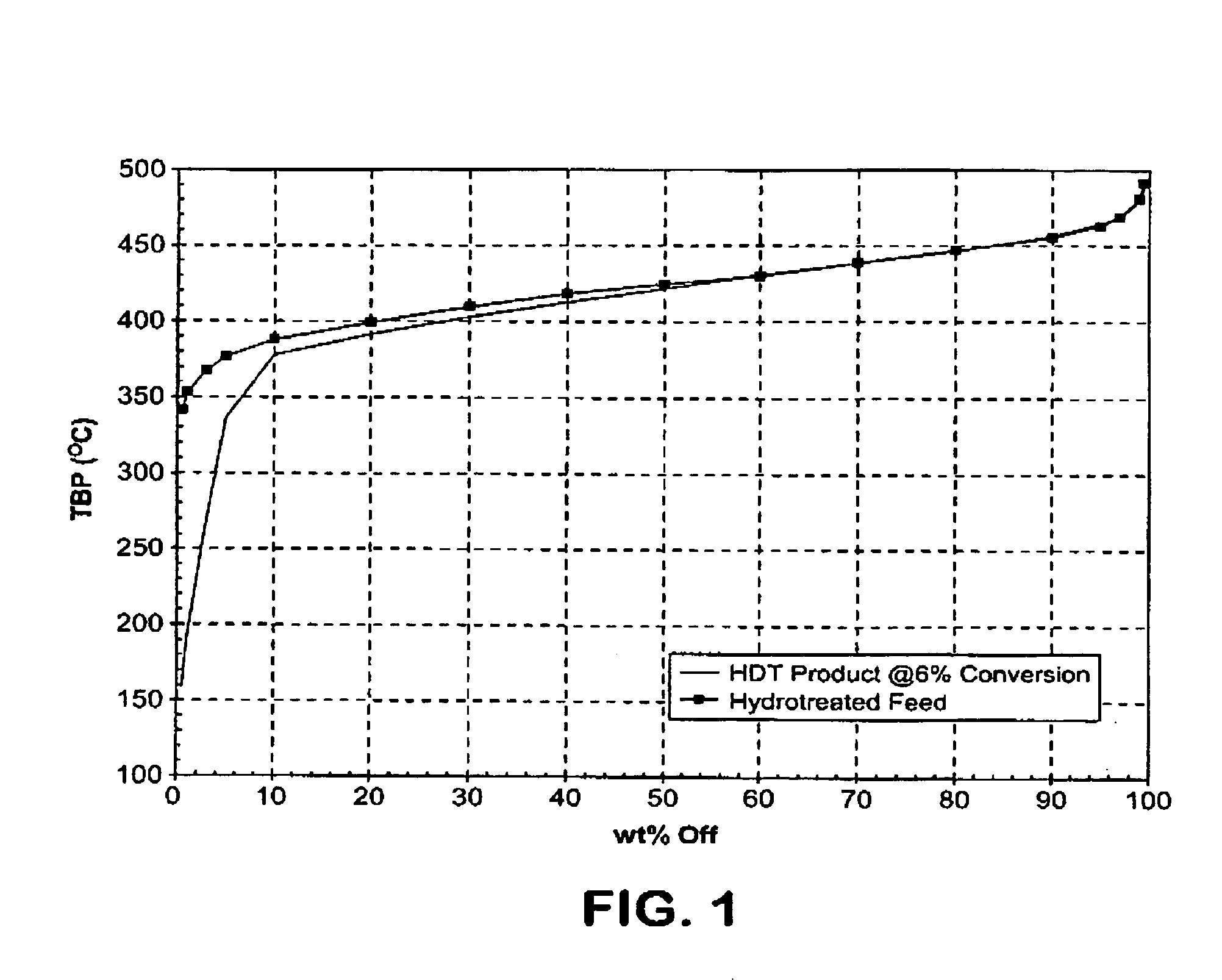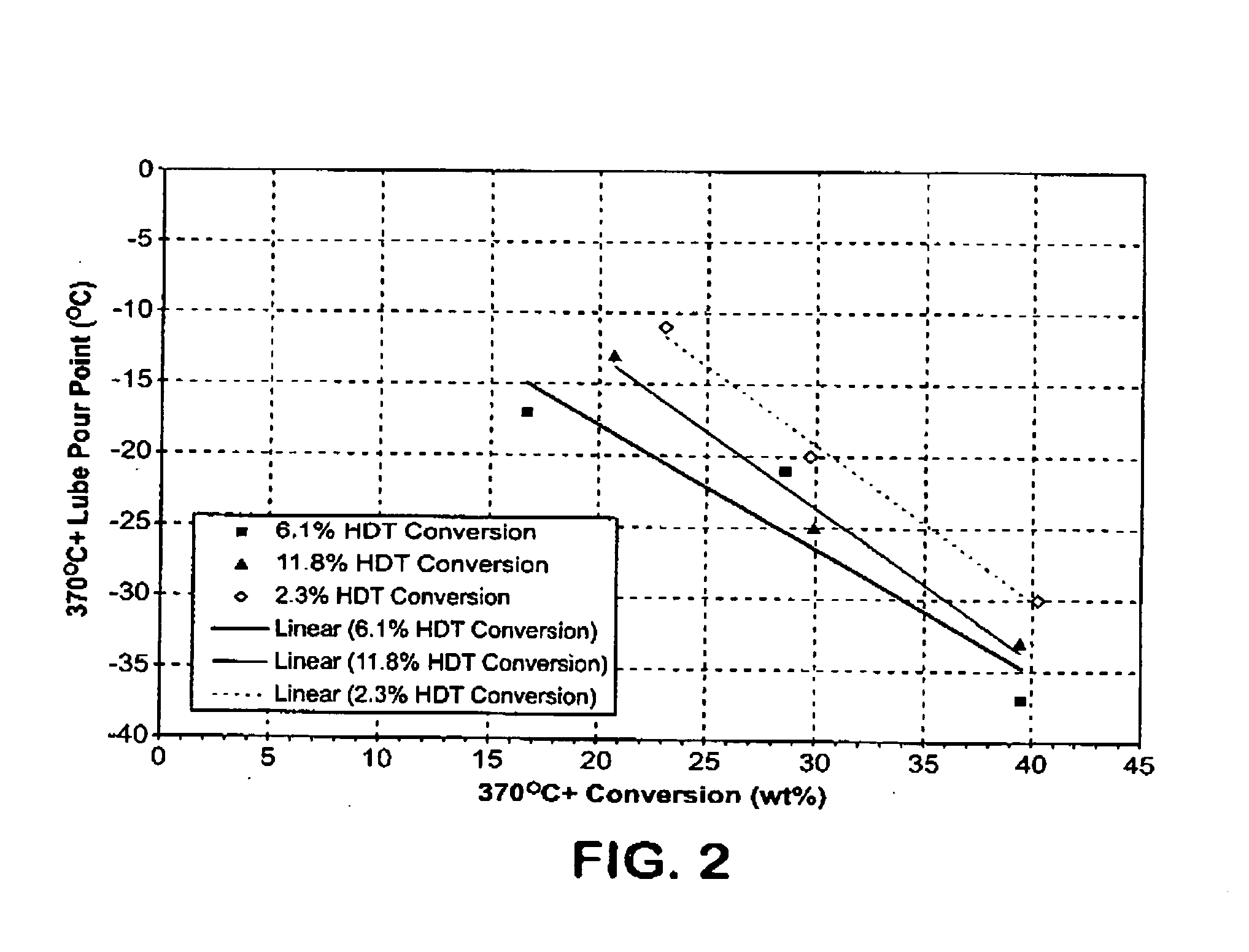Production of high viscosity index lube base oils
- Summary
- Abstract
- Description
- Claims
- Application Information
AI Technical Summary
Benefits of technology
Problems solved by technology
Method used
Image
Examples
example 1
[0044]Production of a high viscosity base oil begins by selecting a suitable feed, such as a feed with greater than 15 wt % or greater than 20 wt % oil in wax. A typical high wax content feed containing oil may contain sulfur, nitrogen, aromatics, or other contaminates such as olefins that would hinder the wax isomerization process. The feed is hydrotreated in a controlled manner to remove sulfur, nitrogen, aromatics, and other contaminates and to severely hydrotreat the high wax content feed to improve the feed properties before wax isomerization. The higher conversion in the hydrotreater, greater than necessary to convert the sulfur and nitrogen to less than 50 ppmw S and 1 ppmw N, allows for the overall improvement in yield and low temperature properties when used in combination with a catalytic isomerization step. The highly hydrotreated feed stock when isomerized produces a higher viscosity index lube base oil as compared to a feed stock mildly hydrotreated just to remove sulfu...
example 2
Yield Benefit
[0052]In various embodiments, another aspect of the invention is an expected ability to achieve higher yields of desirable base oils by using feeds with oil contents that are conventionally believed to be less desirable.
[0053]Conventionally, a process for producing a high viscosity 4 cSt base oil would involve starting with a feed containing 8-10 wt % oil in wax. This feed would be hydrotreated to a conversion level sufficient to remove sulfur and nitrogen. Typically, this would require less than 3% conversion, such as between 0.5 and 2.5% conversion. The hydrotreated feed would then be dewaxed to a sufficient pour point (such as −18° C.) provide a base oil. The yield across the combination of the hydrotreating and dewaxing steps would be in the range of 30-40%.
[0054]Using process conditions according to the invention, it is believed a higher overall yield can be achieved using a feed that is conventionally considered as unsuitable for forming a 4 cSt high viscosity bas...
PUM
 Login to View More
Login to View More Abstract
Description
Claims
Application Information
 Login to View More
Login to View More - Generate Ideas
- Intellectual Property
- Life Sciences
- Materials
- Tech Scout
- Unparalleled Data Quality
- Higher Quality Content
- 60% Fewer Hallucinations
Browse by: Latest US Patents, China's latest patents, Technical Efficacy Thesaurus, Application Domain, Technology Topic, Popular Technical Reports.
© 2025 PatSnap. All rights reserved.Legal|Privacy policy|Modern Slavery Act Transparency Statement|Sitemap|About US| Contact US: help@patsnap.com


